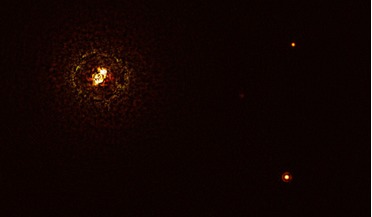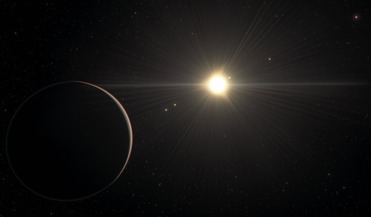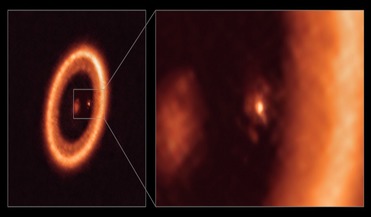 10 December 2021
Extreme exoplanet changes the picture about massive stars as planet hosts
10 December 2021
Extreme exoplanet changes the picture about massive stars as planet hosts
..., though it was not recognised as a planet at the time. With upgrades planned for the VLT, and when ESO’s Extremely Large Telescope (ELT) starts observations later this decade, astronomers may be able to unveil more about this planet’s formation...
 12 October 2020
Rarely detected star shredding event caught in unprecedented detail
12 October 2020
Rarely detected star shredding event caught in unprecedented detail
... gravity environments around them. More light could soon be shed on these relatively rare events when ESO’s Extremely Large Telescope (ELT) starts operating this decade. Nicknamed “the world’s biggest eye on the sky”, this revolutionary new ...
 15 November 2017
Earth-mass temperate exoplanet found close by
15 November 2017
Earth-mass temperate exoplanet found close by
... as these will be found in greater number with advancing technology. And when they are found, then ESO’s Extremely Large Telescope (ELT) will be on hand to help detect vital organic biomarkers, such as oxygen, in the atmospheres of exoplanets close...
 25 January 2021
Unique six-exoplanet system challenges theories of how planets form
25 January 2021
Unique six-exoplanet system challenges theories of how planets form
..., they might find additional planets that could exist in or very close to this zone. In addition, when ESO’s Extremely Large Telescope (ELT) begins operating later this decade it will be able to directly image rocky exoplanets in a star’s habitable...
 23 July 2021
Astronomers detect a disk where exoplanet moons could be forming
23 July 2021
Astronomers detect a disk where exoplanet moons could be forming
... by PDS 70c. To get an even better look at the system, the team will have to wait until ESO's Extremely Large Telescope (ELT), which is currently under construction on Cerro Armazones in the Chilean Atacama desert, becomes operational. Once it does...
 23 June 2017
Will our next nearest exoplanet be found soon?
23 June 2017
Will our next nearest exoplanet be found soon?
...stars have already begun by the scientific team using ESO’s High Accuracy Radial velocity Planet Searcher (HARPS) ...are indeed discovered around these stars, it is hoped that ESO’s Extremely Large Telescope (ELT) will be able to directly image them and...